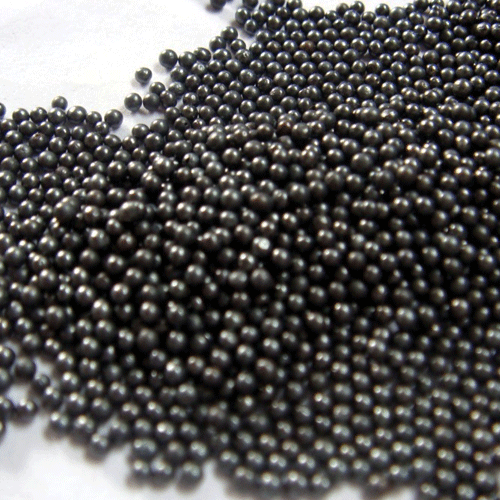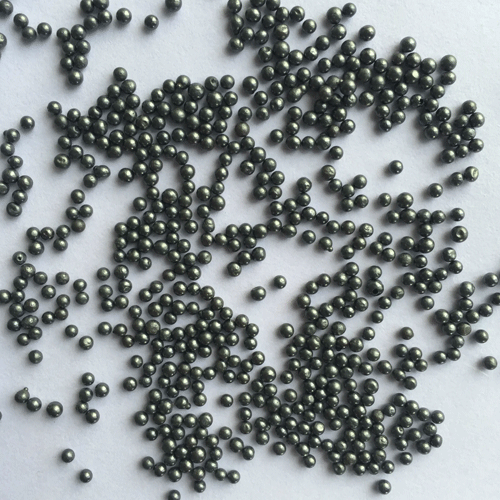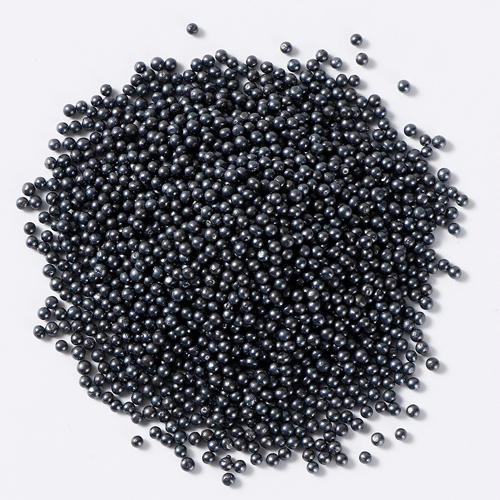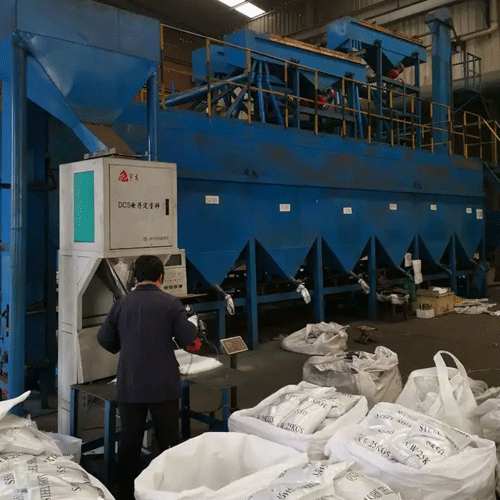The principle of shot blasting is to use a motor to drive the impeller body to rotate (directly driven or driven by a V-belt), and rely on the centrifugal force to shoot projectiles with a diameter of about 0.2 to 3.0 (with cast steel shots, steel wire cut shots, stainless steel shots, etc.) type) to the surface of the workpiece, so that the surface of the workpiece reaches a certain roughness, making the workpiece beautiful, or changing the welding tensile stress of the workpiece to compressive stress, and improving the service life of the workpiece. By increasing the roughness of the surface of the workpiece, the paint film adhesion of the subsequent painting of the workpiece is also improved.
Sand blasting uses compressed air as the power to form a high-speed jet beam to spray the spray material (copper ore sand, quartz sand, corundum, iron sand, Hainan sand) to the surface of the workpiece to be treated at high speed, so that the outer surface of the workpiece surface looks or When the shape changes, due to the impact and cutting effect of the abrasive on the surface of the workpiece, the surface of the workpiece can obtain a certain degree of cleanliness and different roughness, so that the mechanical properties of the surface of the workpiece can be improved, thus improving the fatigue resistance of the workpiece and increasing the The adhesion between it and the coating prolongs the durability of the coating film, and is also conducive to the leveling and decoration of the coating.
Compared with other cleaning processes (such as pickling, tool cleaning), the sand blasting process has the following characteristics:
1. Sandblasting is the most thorough, versatile, fastest and most efficient cleaning method.
2. The sandblasting treatment can be arbitrarily selected between different roughnesses, while other processes cannot achieve this. Manual grinding can produce rough surface but the speed is too slow, and chemical solvent cleaning can clean the surface too smooth, which is not conducive to coating adhesion.
Features of shot peening:
1. Great cleaning flexibility. It is easy to clean the inner and outer surfaces of complex workpieces and the inner wall of pipe fittings; and it is not limited by the site, it can be moved to the vicinity of oversized workpieces for cleaning.
2. The structure of the equipment is simple, the investment of the whole machine is small, the wearing parts are few, and the maintenance cost is low.
3. It consumes a lot of energy and must be equipped with a high-power air compressor station
4. The cleaning surface is prone to moisture and easy to embroider.
5. The cleaning efficiency is low, there are many operators, and the labor intensity is high.
Features of shot blasting:
1. Poor flexibility. Due to the limitation of the site, the cleaning of the workpiece is somewhat blind, and it is easy to produce dead angles that cannot be cleaned on the inner surface of the workpiece.
2. There is no need to compress the air to accelerate the projectile, and it is not necessary to set up a high-power air compressor station.
3. The cleaning surface is not easy to have moisture, and it is not easy to embroider.
4. The structure of the equipment is relatively complicated, and there are many wearing parts, especially parts such as blades, which require a lot of man-hours and high costs for maintenance.
5. High cleaning efficiency, low cost, less operators, easy to realize automatic control, suitable for mass production.
shot peening
Shot peening shot peening. Surface treatment with shot blasting, strong impact and obvious cleaning effect. However, the treatment of thin plate workpieces by shot peening is easy to deform the workpiece, and the steel shot hits the surface of the workpiece (no matter shot blasting or shot blasting) to deform the metal base material. Since Fe3O4 and Fe2O3 have no plasticity, they are peeled off after being broken, and the oil film and The substrate is deformed together, so for workpieces with oil stains, shot blasting and shot blasting cannot completely remove oil stains. Among the existing workpiece surface treatment methods, sandblasting is the best cleaning method. Sand blasting is suitable for cleaning the workpiece surface with high requirements. However, most of the current general-purpose sandblasting equipment in my country is composed of original heavy sand conveying machinery such as hinge dragons, scrapers, and bucket elevators.
The difference between shot peening and shot blasting
Shot blasting uses high-pressure wind or compressed air as power, while shot blasting is generally a high-speed rotating flywheel that ejects steel sand at high speed. The shot blasting efficiency is high, but there will be dead angles, while the shot blasting is more flexible, but the power consumption is large.
Although the two processes are different in injection power and method, they both aim at high-speed impact on the workpiece, and their effects are basically the same. In comparison, shot peening is finer and easier to control accuracy, but its efficiency is not as high as shot blasting, and it is suitable for complex shapes. For small workpieces, shot blasting is more economical and practical, and it is easy to control the efficiency and cost. The particle size of the shot can be controlled to control the spray effect, but there will be dead angles. It is suitable for batch processing of workpieces with a single shape and surface.
The selection of the two processes mainly depends on the shape of the workpiece and the processing efficiency.
The difference between shot peening and sand blasting
Shot peening and sandblasting both use high-pressure wind or compressed air as power, and blow it out at high speed to impact the surface of the workpiece to achieve the cleaning effect, but the selected medium is different, and the effect is also different.
After sandblasting, the dirt on the surface of the workpiece is removed, the surface of the workpiece is slightly damaged, and the surface area is greatly increased, thereby increasing the bonding strength between the workpiece and the coating/plating layer.
The surface of the workpiece after sandblasting is metallic, but because the surface is rough and the light is refracted, it has no metallic luster and is a dull surface.
After the shot peening treatment, the dirt on the surface of the workpiece is removed, the surface of the workpiece is slightly undamaged, and the surface area increases. Since the surface of the workpiece is not damaged during the processing, the excess energy generated during processing will lead to the substrate of the workpiece surface strengthening.
The surface of the workpiece after shot blasting is also the natural color of metal, but because the surface is spherical, the light part is refracted, so the workpiece is processed into a matte effect.
 How to judge the quality of steel shot
How to judge the quality of steel shot
 Summary of hardness of several common steel shot and steel grit
Summary of hardness of several common steel shot and steel grit
 The formation process of steel shot
The formation process of steel shot
 Steel shot centrifugal pill forming technology is the preferred choice for producing national standard steel shots
Steel shot centrifugal pill forming technology is the preferred choice for producing national standard steel shots